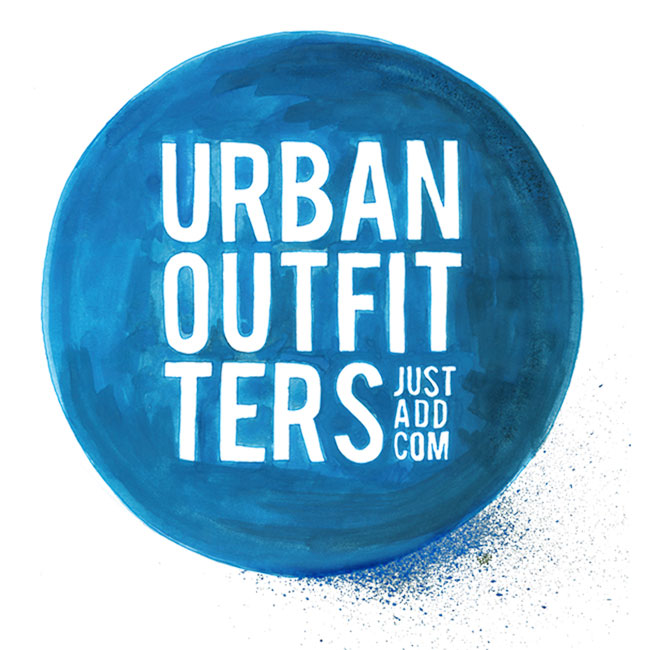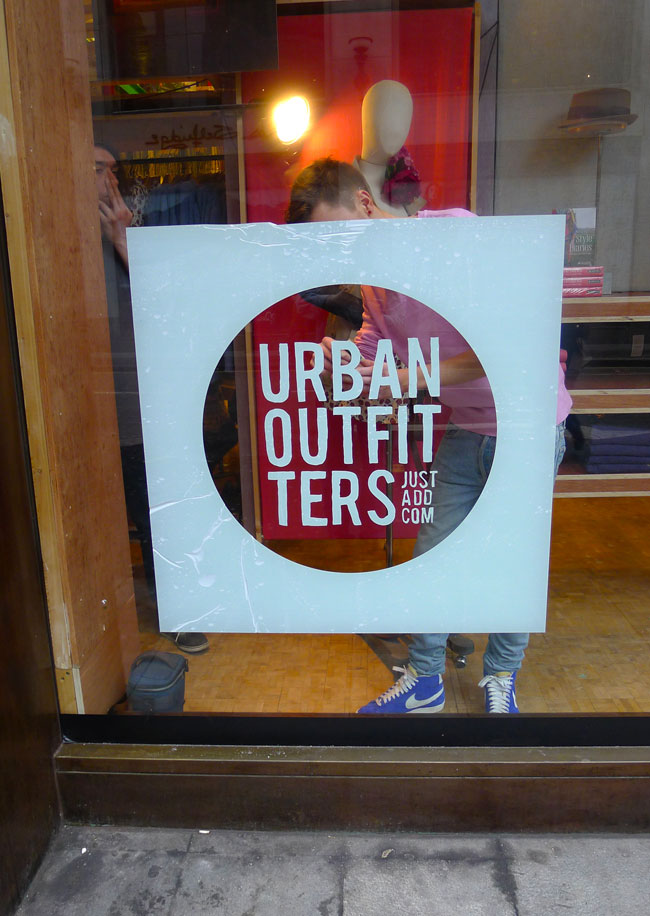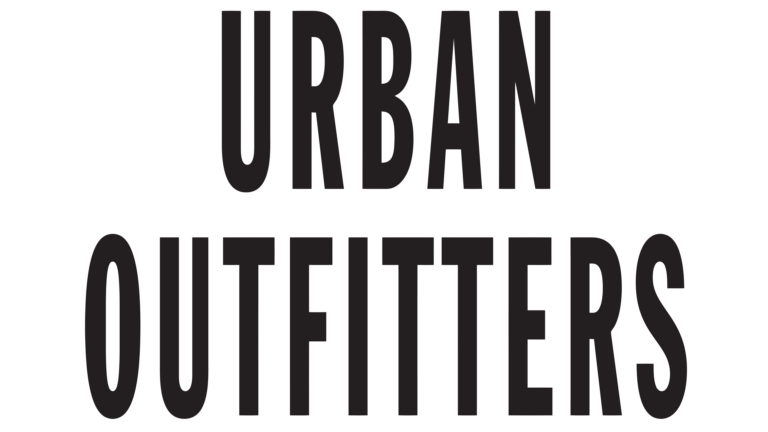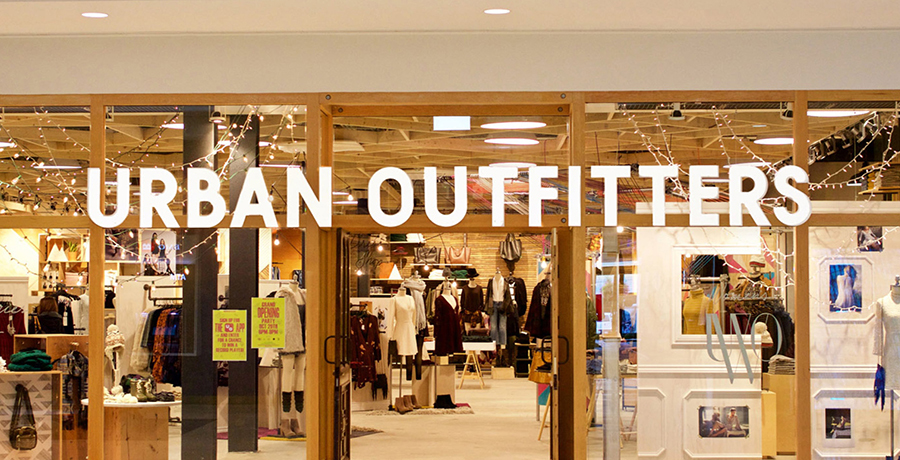Urban Outfitters: A Brand Identity Built on Counterculture and Self-Expression
Related Articles: Urban Outfitters: A Brand Identity Built on Counterculture and Self-Expression
Introduction
With enthusiasm, let’s navigate through the intriguing topic related to Urban Outfitters: A Brand Identity Built on Counterculture and Self-Expression. Let’s weave interesting information and offer fresh perspectives to the readers.
Table of Content
Urban Outfitters: A Brand Identity Built on Counterculture and Self-Expression

Urban Outfitters, the iconic retailer known for its eclectic mix of clothing, home goods, and accessories, has carved a unique niche in the fashion landscape. Its brand identity, a tapestry woven from threads of counterculture, youthfulness, and a distinct sense of individuality, has resonated with generations of consumers, solidifying its position as a cultural touchstone.
Early Roots and the Rise of a Countercultural Aesthetic:
Born in 1970, Urban Outfitters emerged during a period of profound social and cultural change. The brand’s founder, Richard Hayne, recognized the burgeoning demand for alternative fashion and lifestyle choices, particularly among young adults who embraced a countercultural ethos. This early vision laid the foundation for Urban Outfitters’ brand identity, one that celebrated individuality, nonconformity, and a rejection of mainstream trends.
Eclecticism and the Art of Curating:
Urban Outfitters’ brand identity is characterized by its eclecticism, a deliberate fusion of vintage aesthetics, contemporary trends, and independent designer collaborations. The brand’s curatorial approach, carefully selecting items that resonate with its target audience’s desire for unique and expressive pieces, distinguishes it from traditional retailers. This eclectic mix fosters a sense of discovery, encouraging customers to explore and express their personal style through a diverse range of offerings.
A Narrative of Youth and Rebellion:
Urban Outfitters’ brand identity is inherently tied to youth culture and the spirit of rebellion. The brand’s imagery, often featuring models with unconventional looks and an air of effortless cool, embodies this youthful energy. This connection to youth is further reinforced through its focus on music, art, and emerging cultural trends, creating a platform for self-expression and a sense of belonging among those who identify with its countercultural values.
The Power of Storytelling and Brand Experience:
Beyond its product offerings, Urban Outfitters excels at storytelling. Its marketing campaigns, often featuring evocative photography and compelling narratives, tap into the emotional desires of its target audience. The brand’s physical stores, designed with an emphasis on ambiance and experiential elements, further reinforce its brand identity. These spaces serve as more than just retail destinations; they become cultural hubs where customers can connect with the brand’s values and engage with its curated aesthetic.
Staying Relevant Through Adaptation and Evolution:
While remaining true to its core values, Urban Outfitters has demonstrated a remarkable ability to adapt and evolve with changing consumer preferences. The brand has consistently responded to shifts in cultural trends, incorporating new aesthetics and expanding its product categories to cater to a broader range of tastes. This adaptability, coupled with its commitment to fostering a sense of community and self-expression, has ensured its enduring appeal.
The Importance of Brand Identity for Urban Outfitters:
Urban Outfitters’ brand identity is not merely a marketing strategy; it is the very essence of the brand. It is what attracts and connects with its target audience, fostering a sense of loyalty and emotional attachment. This strong brand identity has allowed Urban Outfitters to:
- Stand out in a crowded market: By embracing a distinct and authentic aesthetic, Urban Outfitters differentiates itself from its competitors, establishing a unique position in the retail landscape.
- Build a loyal customer base: The brand’s strong identity resonates with a specific demographic, fostering a sense of belonging and encouraging repeat purchases.
- Drive brand advocacy: Customers who align with Urban Outfitters’ values become brand ambassadors, spreading the word and contributing to its positive image.
- Command premium pricing: The brand’s unique positioning and association with counterculture allows it to command premium prices for its products.
FAQs Regarding Urban Outfitters’ Brand Identity:
Q: How does Urban Outfitters’ brand identity differ from other retailers?
A: Urban Outfitters distinguishes itself through its embrace of counterculture, its eclectic mix of products, and its focus on youthfulness and self-expression. This contrasts with more traditional retailers that often prioritize mass appeal and conformity.
Q: How does Urban Outfitters’ brand identity impact its marketing strategies?
A: Urban Outfitters’ marketing campaigns often feature edgy imagery, authentic storytelling, and collaborations with artists and musicians, reflecting the brand’s countercultural ethos. These campaigns aim to connect with the emotional desires of its target audience, fostering a sense of identity and belonging.
Q: How has Urban Outfitters’ brand identity evolved over time?
A: While remaining true to its core values, Urban Outfitters has adapted its brand identity to reflect changing cultural trends and consumer preferences. The brand has incorporated new aesthetics, expanded its product categories, and embraced digital platforms to stay relevant and connect with a wider audience.
Tips for Understanding Urban Outfitters’ Brand Identity:
- Explore the brand’s history: Understanding Urban Outfitters’ origins and its connection to counterculture provides valuable insights into its brand identity.
- Examine the brand’s marketing materials: Analyze the imagery, messaging, and collaborations used in Urban Outfitters’ campaigns to understand its target audience and its core values.
- Visit a physical store: Immerse yourself in the brand’s curated environment and observe the ambiance, product selection, and overall customer experience.
- Follow the brand on social media: Engage with Urban Outfitters’ online presence to understand its current trends, collaborations, and cultural influences.
Conclusion:
Urban Outfitters’ brand identity is a testament to the power of authenticity, self-expression, and a commitment to fostering a sense of community. By embracing countercultural values, curating a unique aesthetic, and adapting to changing trends, the brand has established itself as a cultural touchstone, resonating with generations of consumers who seek individuality, creativity, and a connection to a shared ethos. This enduring appeal underscores the importance of a strong brand identity, one that transcends mere marketing and becomes an integral part of the brand’s DNA.








Closure
Thus, we hope this article has provided valuable insights into Urban Outfitters: A Brand Identity Built on Counterculture and Self-Expression. We appreciate your attention to our article. See you in our next article!